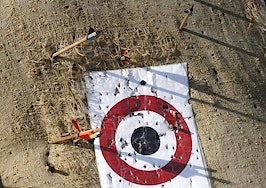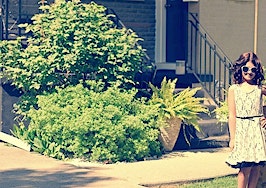- The 'herd mentality' in investing leads to subpar results.
- Buying an ugly house, in the right area, can be a fantastic investing opportunity, but don't overpay for your rehab, or your profits will evaporate.
- Buy real estate property under market value in revitalizing areas, regardless of its current appearance.
A friend of John C. Maxwell, author of the book “Thinking For a Change,” observed: “The problem with popular thinking in business is that it doesn’t require you to think at all.” Most of us don’t want to do the tough work of thinking.
It’s much easier to just follow the herd in investing and hope they thought it all through. That’s why so few of us are ever rich and successful.
[Tweet “It’s much easier to just follow the herd in investing and hope they thought it all through. “]
Look at the stock market. The herd instinct of many conventional investment managers and their clients encourages them to invest in index funds, exchange traded funds and government bonds.
Popular thinking says that type of stock market investing is safe. Blindly following the crowd isn’t thinking, which is why it usually brings average results.
Unpopular investing in the stock market
However, two contrarian investment managers in New York City named Martin and Ari Sass reject this popular thinking in stock investments. Instead, they conduct deep, forensic research of companies to determine the few with the strongest management that meet a stringent criteria.
This investing style has led them to better returns with less risk — to the tune of now having $7.5 billion in assets under management for Fortune 500 firms and high-net-worth individuals. And note that both men started with no money and no Wall Street contacts. Daring to be unpopular in stock investing can achieve incredible results.
Unique thinking in real estate investing
Similarly, daring to be unpopular in real estate investing can yield spectacular results that few investors achieve. In my San Antonio, Texas, real estate investing career, which spans 15 years, I have made several million dollars by embracing unpopular thinking.
In short, I buy what other investors sprint away from.
Most real estate investors in my city chase 5 percent returns on rentals in $200,000 pretty houses or $40,000 returns on flips. Not me. I love making $5,000 on a deal when I do an occasional flip. Usually, I buy ugly, distressed houses from $25,000 to $70,000 in blue-collar neighborhoods that some investors would never consider.
Junk houses
Falling-apart house in the right area? I’ll take it. A burned house? No problem. Holes in the roof? Great. Foundation issue? Love it. Dirt floor? Of course — sold. A two-bedroom? Yes. A one-bedroom? Heck yes — I’ll convert it to a two- or three-bedroom for $5,000.
No one wants these deals, so I get a fantastic price, and most of the fixes and rehab are easy and inexpensive for my wholesale-priced construction company to complete.
In most cases, I buy in up-and coming-areas. So when I owner-finance these distressed houses after a partial rehab to carefully screened buyers, they sell quickly. It’s now a quite pretty house in a revitalizing area that is near downtown.
For me, the investor, owner finance means that I have zero maintenance costs. I make long-term cash flow in the 10 percent to 15 percent per year range on every one of my deals without fail.
[Tweet “For me, the investor, owner finance means that I have zero maintenance costs.”]
Lazy thinking means serious cash flow for me
Popular thinking rejects my model, naturally:
- That area has high crime. It’s too dangerous.
- My $25,000 real estate investing seminar said “never buy ugly stuff.”
- Those houses are falling apart and too expensive to fix.
- You can’t resell a two-bedroom, one-bath.
- You’ll never find a good, paying occupant for those houses.
- That house should be demolished.
I love that conventional real estate investors are too lazy to do their own thinking. That means more great deals for my investors and me.
Here is a typical property that I buy:
This home is only $24,000, and it’s a located in 78207, where the city of San Antonio has poured tens of millions of dollars into revitalization: parks, running and walking trails, picnic areas, shopping plazas, green space and more. It’s only about two miles from downtown. It’s currently ugly and just sat there. I snatched it up.
Next door and across the street are owner-occupied houses worth $80,000 to$100,000.
Meanwhile, no one wants my junk house because of its current state:
Conventional thinking cannot see beyond the surface ugliness, but by engaging my brain, I see the obvious: Because of the neighborhood and the revitalizing nearby, this deal is a fantastic investor opportunity.
This house only needs $19,000 in repairs completed in 30 days or less (my construction company cost; retail cost would be $30,000 or more):
- Electrical update
- New flooring (float new floor over that minor foundation issue after it’s repaired)
- Clean out
- Update bath and kitchen with tile and granite
- New light fixtures
- Paint in and out
- Finish second bedroom
After-repair value will be approximately $60,000 to $65,000 (I always run neighborhood comps). On an owner-financed note, this house will return approximately 10 percent per year to the investor — with no maintenance costs. With the pretty homes next door and the parks, running trails, shopping and downtown so close, this house will resell in 30 to 90 days.
However, because the house is ugly, and most investors learned to never buy ugly houses at their real estate investing seminar, they will miss out on a great deal. It is deals like this one that have made me wealthy beyond my dreams.
And it’s mostly due to the fact that I ignore popular thinking, and I dare to be unpopular.
So should you:
- When investing in real estate, think about rejecting the conventional wisdom.
- Buy an ugly house under market value in an up-and-coming area.
- Do the necessary repairs to resell it, but don’t overpay on the rehab.
- Consider owner-financing the property to a well-qualified buyer.
And you could have yourself a fantastic long-term investment that the non-thinking herd will never enjoy.
[Tweet “You could have yourself a fantastic long-term investment that the non-thinking herd will never enjoy.”]
John Majalca financially retired in real estate investing in 2006 with more than $35,000 per month in cash flow; he also is a licensed agent. Visit his website, and follow him on LinkedIn.















